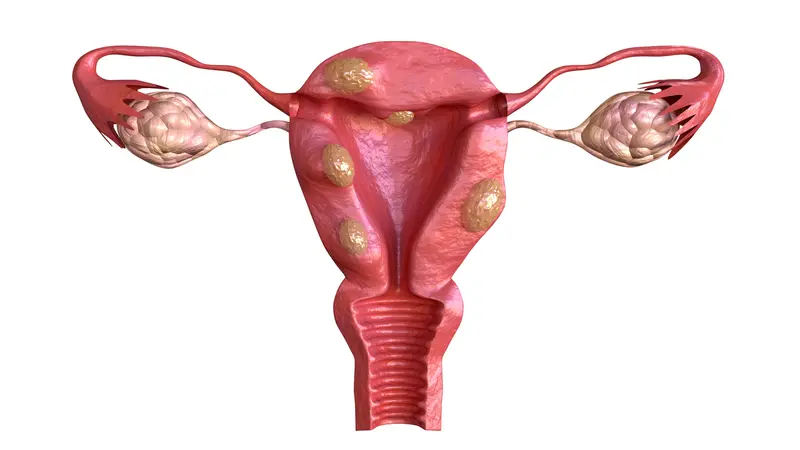

Chronic Conditions and Diseases

Chronic Conditions and Diseases
Uterine Fibroids: A Functional Medicine Approach
Uterine fibroids (leiomyomas or myomas) are the most common benign tumors in women, affecting an estimated 60% of reproductive-aged women, and 80% of women develop the disease during their lifetime. Some studies also suggest the incidence of uterine fibroids is very high in perimenopausal women aged 40-54 years due to hormonal imbalance.
In early stages of uterine fibroids, there are often no obvious symptoms, and they are not typically detected in physical examination. Symptoms can include:
- Heavy or prolonged menstrual bleeding
- Anemia
- Pelvic pain
- Infertility
- Recurrent pregnancy loss.
Obesity is a risk factor for uterine fibroids, and may be a basis for prevention and control of the disease. Surgery and radiologic treatments are often used to treat uterine fibroids; however, some research suggests that a functional medicine approach, which includes lifestyle interventions to reduce the risk of obesity may be considered as a first-line treatment.
Case Studies
In a small, case-controlled study of premenopausal women, vegetable and fruit intakes were found to significantly decrease the risk of fibroids, and a high BMI significantly increased the risk.
In a 2019 case-control study that explored the relationship between visceral fat and the development of uterine fibroids, it was found that increased body fat (especially abdominal visceral fat) may enhance the risk of the disease and may be used as an indicator for screening high-risk groups. The study authors also noted that providing nutritional guidance and changing diet and exercise habits are important measures to prevent developing uterine fibroids.
According to the Doctor
Dr. Joel Evans, a board-certified OB/GYN and hormone expert and educator, prescribes lifestyle interventions for his patients suffering from fibroids. According to Evans, interventions have to address the imbalances that lead the fibroid to grow: visceral adipose tissue (VAT), increased insulin, and increased inflammation.
He emphasizes the importance of having an appropriate body weight and how it affects almost every system in the body. The best way to get rid of VAT is through a combination of healthy eating and exercise.
“Between gut health, improved detoxification, normalizing insulin, the right exercise, and the right diet, those are the foundational interventions for lifestyle ways to decrease fibroids.”
To normalize insulin levels, some neutraceuticals (e.g., alpha lipolic acid, cinnamon, chromium, vanadium, berberine, acacia, and certain hops derivatives) are important.
Evans also addresses the ways the body clears estrogen through detoxification pathways and the digestive tract. In order to detoxify excess estrogen, the body must be able to methylate well. Evans includes liver-supporting supplements as well as cruciferous vegetables such as cauliflower, kale, and cabbage to help eliminate estrogens. He also talks about intermittent fasting or ketogenic diets as beneficial for fibroids, all which lead to a decrease in the amount of estrogen in the body. Evans also advises against the intake of too much exogenous estrogen in the body through foods like dairy, as it has been shown that milk has bovine growth hormone that can have estrogenic effects.
In the intestinal tract, it is important there is no constipation, because when there is constipation and the microbiome is unhealthy, the body reabsorbs estrogen through an enzyme (beta glucuronidase). Taking a probiotic may help support the microbiome.
“Between gut health, improved detoxification, normalizing insulin, the right exercise, and the right diet, those are the foundational interventions for lifestyle ways to decrease fibroids.”
REFERENCES
The Institute for Functional Medicine. (n.d.). A functional medicine approach to uterine fibroids. https://www.ifm.org/news-insights/video-approach-fibroids/


 By
By







